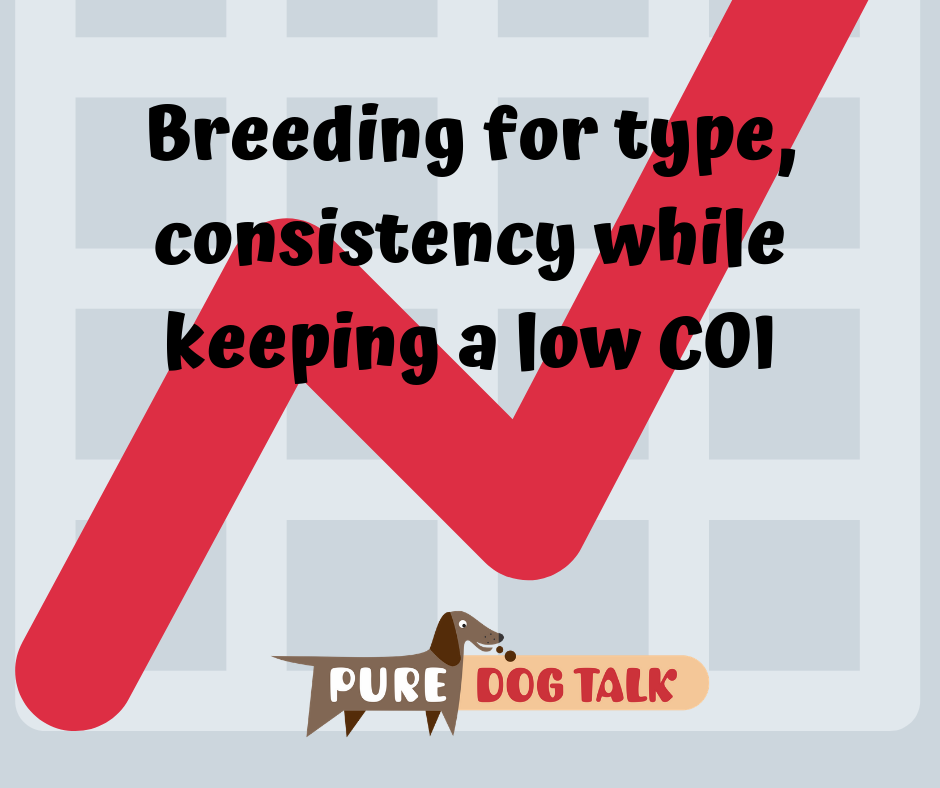397 — Planning Your “Family” of Dogs: Style and Health
Planning Your “Family” of Dogs: Style and Health
Our topic is breeding. With an emphasis on planning your family of dogs. The question: is consistency of style more important than consistency of health and/or quality? How do you get to your desired goals?
Today’s guests are Amanda Kelly, Wendy Paquette and Chris Heartz.
Wendy: “Coming from a background of Shih tzu, that were only recognized in United States in 1969, I didn’t have much choice when I first started my breeding program. Living in northern Ontario, the only way I could buy a female was to import two from England ’cause they were just not available. Luckily I came across Luc Boileau in Montreal who was showing English imported dogs at the time. So I was able to take my English import and breed it to one of Luc’s dogs. But that left me sort of in a quandary because I had nowhere else to go after that. So I basically started out breeding type to type.
“Consistency of type was a goal, but health and welfare, to me, is a major factor. If you don’t have health and welfare you don’t have quality and type either.”
309 — Breeding for type, consistency while keeping a low COI
Breeding for type, consistency while keeping a low COI

Dr. Victor Stora, veterinary medical geneticist, with some of his Shetland Sheepdogs.
Victor Stora, Shetland Sheepdog breeder, AKC/CHF Residency Recipient and Veterinary Geneticist at University of Pennsylvania, shares concrete information on breeding for type and consistency of style while keeping a low COI (Coefficient of Inbreeding).
Stora observed that many breeders fall in to one of two categories.
“People might fall in to health testing too much and losing type, or you have people ignoring health because they’re getting the type they want. The happy medium is where people should be,” Stora said.
Health test all you want, Stora noted, but keep in mind it doesn’t mean the dogs are free of disease… just all the ones you can test for. What are the really bad diseases that affect a breed, he queried, adding that the more “lethal” diseases get higher priority.
Health testing and COI are tools
“Once you get to the point that you have the animals that you’ve screened, choose the ones that have the least problems health testing wise and are most like the type you desire,” Stora recommended. “Health testing is a tool, not a meter to eliminate animals because they don’t pass the bar.”
He also strongly recommends incorporating carriers of some diseases in a breeding program. “If you eliminate carriers, assuming the carrier has no disease, you’re removing dogs that are healthy. You can zoom in *too* much on health testing, and lose what you had in the beginning.”
We don’t have all the answers yet
Stora also noted that the primary diseases we want to know about, epilepsy, cancer etc, we don’t have an answer and that they are likely environmental, plus genetic.
When it comes to autoimmune disease, Stora said the breeder’s goal is to have more genetic variation to combat it.
“Outcross to a point, line breed to a point. Watch what’s happening. If you don’t choose for fertility, you’re choosing against it. Fertility is a heritable trait,” Stora said. “Nobody got into this because it’s easy. It’s not.”
Finally, Stora counseled to stop breeding affected dogs once the breed or line has started making headway against that disease.
“If the disease is rare within a breed, never breed affected because you don’t have to. If it is common within the breed, you have to use affected,” Stora said.


